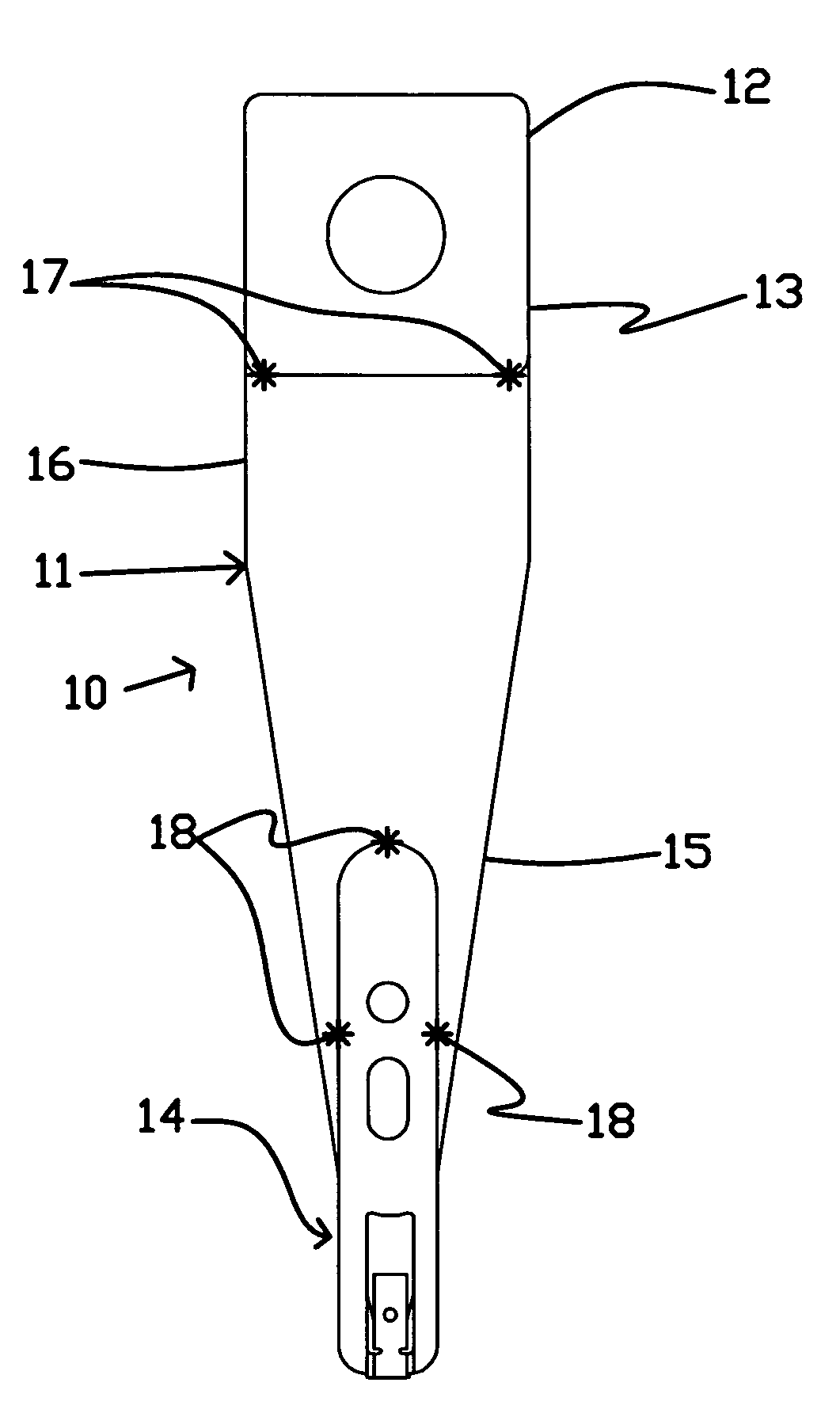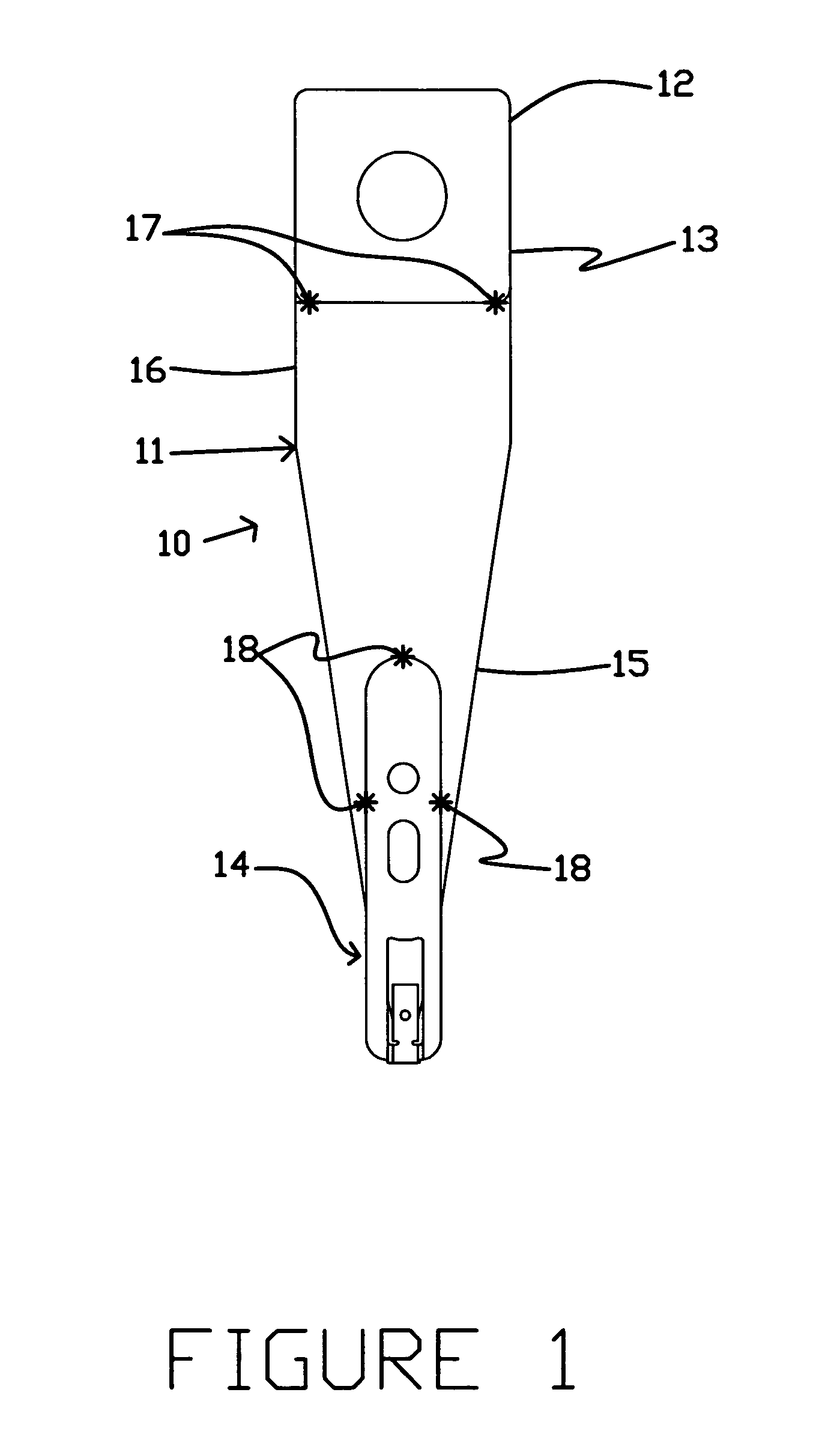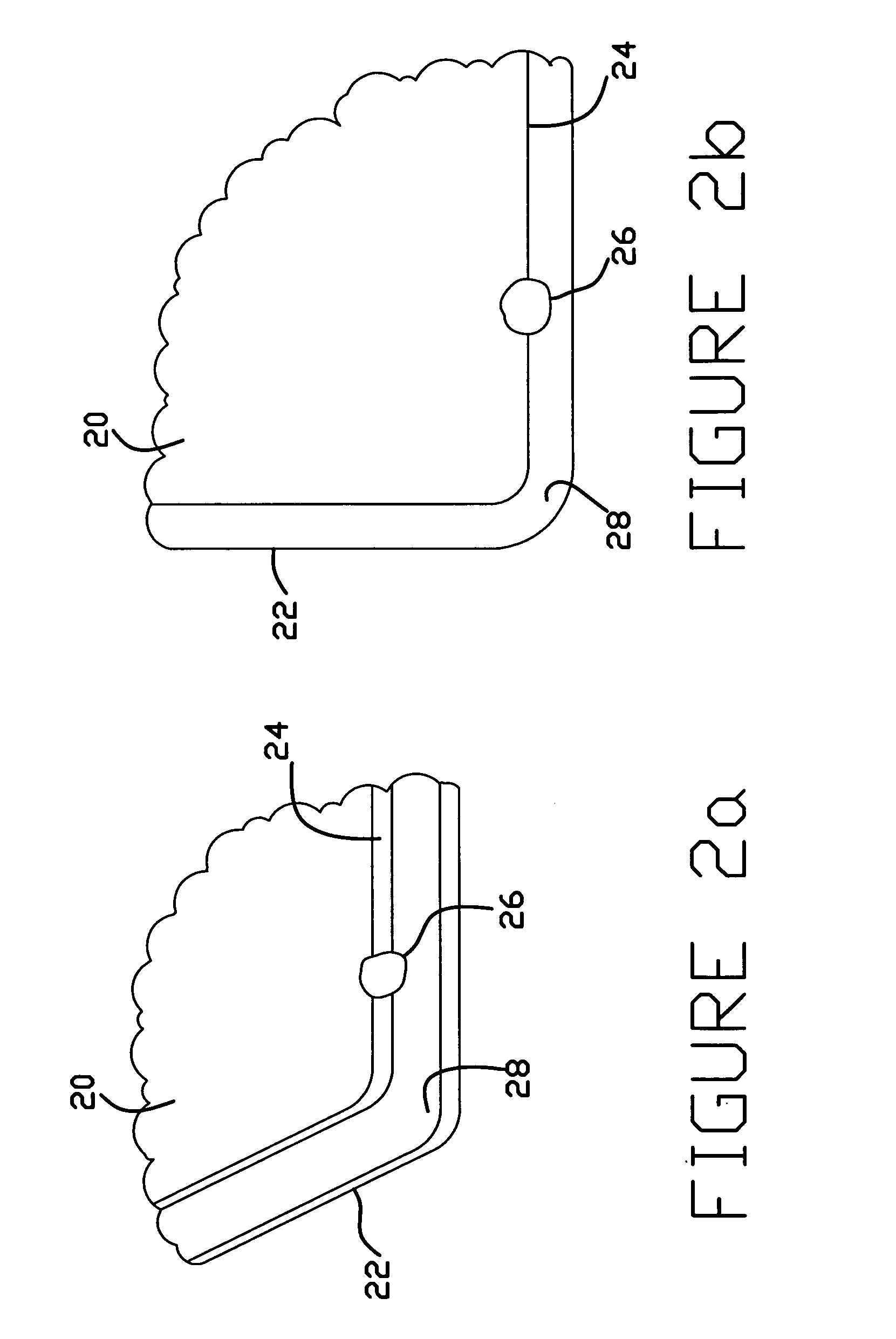Method for welding components of a disk drive head suspension
a technology of disk drive and components, which is applied in the direction of soldering equipment, manufacturing tools, instruments, etc., can solve the problems of residual stresses in the components after the weld formation, and achieve the effects of reducing tool design constraints, reducing production costs, and less waste of materials
- Summary
- Abstract
- Description
- Claims
- Application Information
AI Technical Summary
Benefits of technology
Problems solved by technology
Method used
Image
Examples
Embodiment Construction
[0030]The method of the present invention is useful in attaching head suspension components together during the manufacture of a head suspension assembly, using a weld at a lap-type joint. FIG. 1 shows a head suspension assembly 10. A load beam 11 is attached to a base plate 12 at a mounting region 13 of the load beam, located at a proximal end of the load beam 11. Extending from the mounting region 13 of the load beam 11 is a spring region 16, which permits some degree of bending in the assembly 10. A flexure 14 is attached to the load beam 11 at least at a distal end of the load beam 11. Between the spring region 16 and the flexure 14 is a relatively rigid region 15 of the load beam 11. Preferably, the head suspension assembly components are fabricated primarily from stainless steel.
[0031]A known alternative to the head suspension assembly shown in FIG. 1 is a unitary-type load beam and actuator arm head suspension assembly. The unitary-type head suspension assembly (not shown) is...
PUM
| Property | Measurement | Unit |
|---|---|---|
| Flow rate | aaaaa | aaaaa |
| Energy | aaaaa | aaaaa |
Abstract
Description
Claims
Application Information
 Login to View More
Login to View More - R&D
- Intellectual Property
- Life Sciences
- Materials
- Tech Scout
- Unparalleled Data Quality
- Higher Quality Content
- 60% Fewer Hallucinations
Browse by: Latest US Patents, China's latest patents, Technical Efficacy Thesaurus, Application Domain, Technology Topic, Popular Technical Reports.
© 2025 PatSnap. All rights reserved.Legal|Privacy policy|Modern Slavery Act Transparency Statement|Sitemap|About US| Contact US: help@patsnap.com



